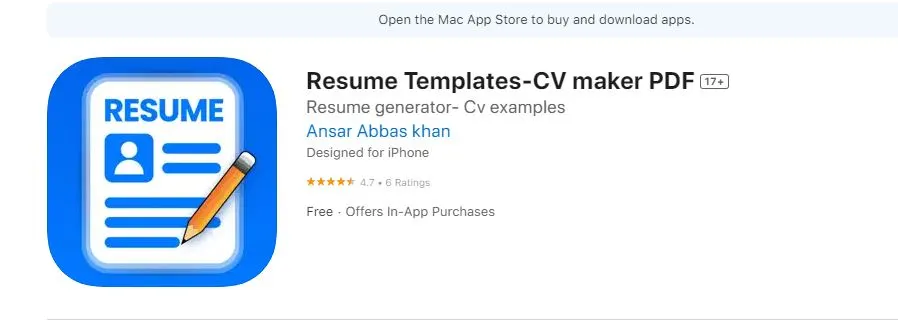
Charles Dickens
Career Expert
2023-11-27 14:25:53

The workplace is full of twists and turns, and one problem that many of us may confront is the harsh reality of downsizing.
When the unexpected happens and your job is on the line, you must be strong in the following.
How you express your downsizing experience on your resume is an important component of this process.
Let's look at some practical ways to transform this possible roadblock into a stepping stone to future success.
12 Practical Ways To Communicate Layoff Experience
1: Be Direct and Honest
The basis of any successful communication strategy is honesty. Be direct when discussing downsizing on your CV.
Avoid sugarcoating the problem and fight the want to leave it out entirely. Transparency is valued by recruiters, and being open about downsizing demonstrates honesty and resiliency.
2: Use Your Words Carefully
The words you use are important. Consider milder alternatives to terminology like "set off" or "dismissed," such as "position eliminated due to restructuring" or "company realignment".
The idea is to communicate the point without using negative language. The correct words can make a big impact on how people view your downsizing experience.
3: Emphasize Achievements, Not Departure
Change the focus from your departure to the contributions you made while working for the organization. Highlight your accomplishments, projects, and positive influence.
To demonstrate the tangible value you bring to the table, quantify your successes with figures or percentages. This strategy makes it easier for potential employers to see the bright side of your career experience.
4: Highlights Your Accomplishments and Influence
When writing your CV, stress your achievements and the good impact you had while working for the organization. Utilize quantitative measures to highlight your contributions, indicating that your talents and efforts were beneficial to the organization.
This strategy not only diverts attention away from the reduction but also emphasizes your professional capabilities.
5: Career Growth as a Beneficial Result
Downsizing can provide opportunities for personal and professional growth. If you completed classes, received certificates, or learned new skills while away from a formal role, make sure to include them on your resume.
It not only indicates your commitment to keeping relevant, but it also positions you as a candidate who actively strives to improve himself or herself.
6: Make Use of Referrals and References
Nothing is more powerful than the praise you receive from your supervisors or coworkers. Include compliments and recommendations from previous employers on your resume. Recommendations provide a personal touch to your application and reassure prospective employers about your skills and work ethic.
7: Active Networking for a More Powerful Resume
Networking can be extremely useful in the job hunt. Participate actively in both online and offline professional networks.
Make connections with industry specialists who are able to attest to your expertise and work ethic. A strong network might help you add credibility to your resume.
8: Concentrate on Adaptable Abilities
Employers are typically keener on the skills you offer to the table than the details of your previous employment.
Identify your transferable skills from previous work and highlight how they correspond to the job requirements. This allows recruiters to see what advantages you can bring to their organization.
9: Positively Handle Employment Lacks
If your resume shows employment gaps due to downsizing, address them positively. Briefly explain the situation, such as "Exploring new opportunities after a position restructuring."
This transparent approach conveys that you were proactive during your time away from formal employment.
10: Create a Resume for Each Opportunity
When it comes to resumes, one format does not fit all. We must tailor your CV to each job application, highlighting your qualities, skills, and experience.
This not only establishes your suitability for the position but also diverts attention from any downsizing issues.
11: Display Resilience through Extracurricular Activities
Participate in activities that show your resilience and enthusiasm for your field. This could include doing freelance work, volunteering, or attending industry events.
These activities not only keep your abilities sharp but also demonstrate to future employers that you are committed to your professional development.
12: Create a Positive Narrative
In the end, it's all about telling a positive story. Downsizing is only one chapter in your professional life, not the entire book.
Use your resume to tell the tale of your professional career, stressing the lessons you've learned, the skills you've acquired, and the excitement you bring to new chances.
Conclusion
Although communicating a downsizing on your resume can be challenging, with the correct techniques, it can be an effective tool for highlighting your potential and perseverance.
Effectively handling the downsizing and highlighting your achievements and abilities will show that you can rise to new challenges and take advantage of chances.
It all comes down to projecting a professional and positive image of yourself.
Tell the truth, Choose your words wisely, highlight your successes, and showcase your skills. Keep in mind that your CV/Resume is your personal advertisement, and that crafting a compelling story for it might open up fascinating new career doors.
About The Author

Charles Dickens
Career Expert
2023-11-27 14:25:53
Charles is an accomplished resume writer dedicated to shaping impactful career stories. With extensive experience, Charles specializes in unraveling individual professional journeys and highlighting unique strengths to align with specific career goals. Having assisted diverse job seekers across various career stages, Charles emphasizes the transformative impact of a precisely tailored resume.




.webp)


